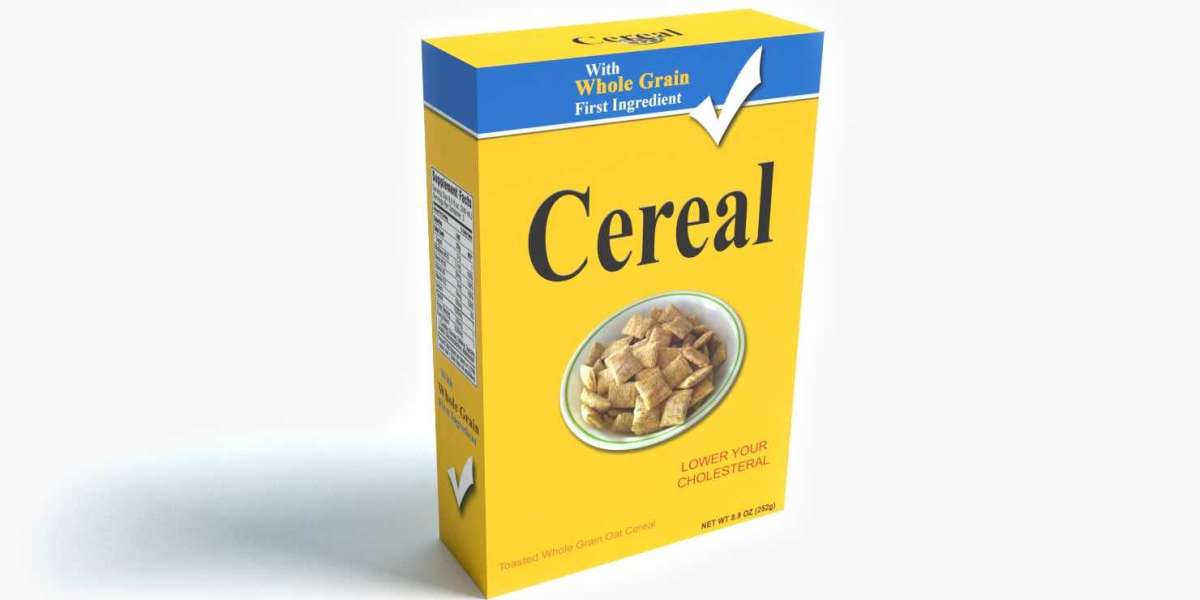Exploring cereal box design evolution, mascots, and trends from the 1950s to today.
Introduction
Cereal boxes have been an integral part of the breakfast experience for generations, serving not only as a convenient container for the cereal itself but also as a powerful marketing tool and a canvas for iconic branding and design. The origins of cereal boxes can be traced back to the late 19th century when the concept of packaged, ready-to-eat breakfast cereals emerged.
History of Cereal Boxes
As the cereal industry grew, so did the importance of cereal box design and marketing. Companies like Kellogg's, Post, and General Mills quickly recognized the potential of these boxes to not only protect their products but also to capture the attention of consumers. Colorful illustrations, catchy slogans, and enticing promises adorned the boxes, transforming them into miniature billboards on grocery store shelves.
The evolution of cereal boxes closely mirrored the changing tastes and trends of society. During the early 20th century, boxes often featured wholesome images of farm life and hearty meals, appealing to a generation seeking nourishment and simplicity. As time progressed, the designs became more vibrant and whimsical, reflecting the growing influence of pop culture and the desire for fun and excitement in the morning routine.
Cereal boxes also played a significant role in shaping childhood memories and fostering brand loyalty. Generations of children grew up eagerly awaiting the arrival of their favorite cereal boxes, captivated by the characters, games, and prizes hidden within. These boxes became more than just containers; they were gateways to imaginative worlds and cherished companions at the breakfast table.
Today, cereal boxes continue to be a powerful marketing tool, with companies constantly innovating and adapting to changing consumer preferences and regulatory requirements. From nostalgic throwbacks to cutting-edge designs, these boxes remain a beloved part of the breakfast experience, reminding us of the enduring power of branding and the ability of a simple cardboard container to capture our imaginations.
Design and Branding
Cereal boxes serve as miniature billboards on grocery store shelves, with their eye-catching designs and branding strategies playing a crucial role in attracting consumers. The visual elements employed on cereal boxes are carefully crafted to create a lasting impression and establish brand recognition.
One of the most prominent features of cereal box design is the use of vibrant colors and bold graphics. Bright hues and eye-catching illustrations are intentionally used to grab the attention of both children and adults. These visuals often depict the cereal itself, along with enticing images of fruit, chocolate, or other tempting ingredients.
Brand mascots and characters have become an integral part of cereal box design, serving as ambassadors for the brand and fostering emotional connections with consumers. From the iconic Tony the Tiger for Frosted Flakes to the lovable Trix Rabbit, these characters not only add personality to the cereal but also aid in brand recognition and loyalty.
Typography and layout play a significant role in cereal box design, with carefully chosen fonts and compositions that aim to convey specific brand values and messaging. Bold, playful fonts may be used to target children, while more sophisticated and elegant typefaces may appeal to health-conscious adults.
In addition to visual elements, cereal boxes often feature marketing strategies such as promotional offers, contests, and interactive components. These tactics aim to engage consumers and encourage repeat purchases, fostering brand loyalty and creating a sense of excitement around the product.
Overall, the design and branding of cereal boxes are meticulously crafted to capture consumer attention, establish brand identity, and ultimately drive sales in the highly competitive cereal market.
Nutritional Information and Regulations
The cereal box has become a battleground for nutritional transparency and government regulation. Consumers demand clear and accurate information about the contents of their breakfast foods, while regulatory bodies strive to enforce guidelines that protect public health.
Nutritional labeling on cereal boxes has evolved significantly over the years. Initially, manufacturers provided minimal details, often obscuring unhealthy ingredients or misleading consumers about nutritional values. However, as public awareness grew, governments implemented stricter labeling requirements.
Today, cereal boxes must prominently display a Nutrition Facts panel that lists serving sizes, calorie counts, and detailed breakdowns of macronutrients (fat, carbohydrates, and protein) and micronutrients (vitamins and minerals). This information empowers consumers to make informed choices and compare products based on their nutritional profiles.
Government regulations also dictate the language and claims permitted on cereal boxes. Terms like "whole grain," "low-fat," or "high-fiber" must meet specific criteria to prevent deceptive marketing practices. Manufacturers found guilty of making false or exaggerated claims face substantial fines and potential product recalls.
Beyond nutritional labeling, regulations also extend to ingredient listings. Cereal boxes must disclose all ingredients in descending order by weight, allowing consumers to identify potential allergens, artificial additives, or controversial components like high-fructose corn syrup. This transparency has driven some manufacturers to simplify their ingredient lists and embrace more natural, recognizable components.
Despite these efforts, debates continue over the adequacy of current regulations and the role of cereal boxes in promoting healthy eating habits. Consumer advocacy groups push for even greater transparency, while industry representatives argue against overly burdensome requirements that could stifle innovation and drive up costs.
As the battle for accurate and comprehensible nutritional information rages on, the humble cereal box remains a critical battleground, reflecting society's evolving attitudes towards food, health, and corporate responsibility.
Targeted Marketing and Demographics
Cereal manufacturers employ a range of targeted marketing tactics to appeal to specific consumer demographics. Children are a primary target, with colorful cartoon characters, prizes, and toy giveaways adorning boxes to attract their attention.
For health-conscious adults, messaging around whole grains, high fiber, low sugar, and nutritional benefits takes center stage. Clean packaging designs with earthy tones and imagery of wholesome ingredients aim to convey a sense of natural goodness. Cereals tailored to dietary needs like gluten-free, vegan, and high-protein options cater to specialized consumer groups.
Gender-specific marketing is also prevalent, with some brands positioning their products as ideal fuel for an active lifestyle geared towards men, while others emphasize weight management and slimming benefits to appeal to women's body image concerns.
Introduction
Cereal boxes have been an integral part of the breakfast experience for generations, serving not only as a convenient container for the cereal itself but also as a powerful marketing tool and a canvas for iconic branding and design. The origins of cereal boxes can be traced back to the late 19th century when the concept of packaged, ready-to-eat breakfast cereals emerged.
History of Cereal Boxes
As the cereal industry grew, so did the importance of cereal box design and marketing. Companies like Kellogg's, Post, and General Mills quickly recognized the potential of these boxes to not only protect their products but also to capture the attention of consumers. Colorful illustrations, catchy slogans, and enticing promises adorned the boxes, transforming them into miniature billboards on grocery store shelves.
The evolution of cereal boxes closely mirrored the changing tastes and trends of society. During the early 20th century, boxes often featured wholesome images of farm life and hearty meals, appealing to a generation seeking nourishment and simplicity. As time progressed, the designs became more vibrant and whimsical, reflecting the growing influence of pop culture and the desire for fun and excitement in the morning routine.
Cereal boxes also played a significant role in shaping childhood memories and fostering brand loyalty. Generations of children grew up eagerly awaiting the arrival of their favorite cereal boxes, captivated by the characters, games, and prizes hidden within. These boxes became more than just containers; they were gateways to imaginative worlds and cherished companions at the breakfast table.
Today, cereal boxes continue to be a powerful marketing tool, with companies constantly innovating and adapting to changing consumer preferences and regulatory requirements. From nostalgic throwbacks to cutting-edge designs, these boxes remain a beloved part of the breakfast experience, reminding us of the enduring power of branding and the ability of a simple cardboard container to capture our imaginations.
Design and Branding
Cereal boxes serve as miniature billboards on grocery store shelves, with their eye-catching designs and branding strategies playing a crucial role in attracting consumers. The visual elements employed on cereal boxes are carefully crafted to create a lasting impression and establish brand recognition.
One of the most prominent features of cereal box design is the use of vibrant colors and bold graphics. Bright hues and eye-catching illustrations are intentionally used to grab the attention of both children and adults. These visuals often depict the cereal itself, along with enticing images of fruit, chocolate, or other tempting ingredients.
Brand mascots and characters have become an integral part of cereal box design, serving as ambassadors for the brand and fostering emotional connections with consumers. From the iconic Tony the Tiger for Frosted Flakes to the lovable Trix Rabbit, these characters not only add personality to the cereal but also aid in brand recognition and loyalty.
Typography and layout play a significant role in cereal box design, with carefully chosen fonts and compositions that aim to convey specific brand values and messaging. Bold, playful fonts may be used to target children, while more sophisticated and elegant typefaces may appeal to health-conscious adults.
In addition to visual elements, cereal boxes often feature marketing strategies such as promotional offers, contests, and interactive components. These tactics aim to engage consumers and encourage repeat purchases, fostering brand loyalty and creating a sense of excitement around the product.
Overall, the design and branding of cereal boxes are meticulously crafted to capture consumer attention, establish brand identity, and ultimately drive sales in the highly competitive cereal market.
Nutritional Information and Regulations
The cereal box has become a battleground for nutritional transparency and government regulation. Consumers demand clear and accurate information about the contents of their breakfast foods, while regulatory bodies strive to enforce guidelines that protect public health.
Nutritional labeling on cereal boxes has evolved significantly over the years. Initially, manufacturers provided minimal details, often obscuring unhealthy ingredients or misleading consumers about nutritional values. However, as public awareness grew, governments implemented stricter labeling requirements.
Today, cereal boxes must prominently display a Nutrition Facts panel that lists serving sizes, calorie counts, and detailed breakdowns of macronutrients (fat, carbohydrates, and protein) and micronutrients (vitamins and minerals). This information empowers consumers to make informed choices and compare products based on their nutritional profiles.
Government regulations also dictate the language and claims permitted on cereal boxes. Terms like "whole grain," "low-fat," or "high-fiber" must meet specific criteria to prevent deceptive marketing practices. Manufacturers found guilty of making false or exaggerated claims face substantial fines and potential product recalls.
Beyond nutritional labeling, regulations also extend to ingredient listings. Cereal boxes must disclose all ingredients in descending order by weight, allowing consumers to identify potential allergens, artificial additives, or controversial components like high-fructose corn syrup. This transparency has driven some manufacturers to simplify their ingredient lists and embrace more natural, recognizable components.
Despite these efforts, debates continue over the adequacy of current regulations and the role of cereal boxes in promoting healthy eating habits. Consumer advocacy groups push for even greater transparency, while industry representatives argue against overly burdensome requirements that could stifle innovation and drive up costs.
As the battle for accurate and comprehensible nutritional information rages on, the humble cereal box remains a critical battleground, reflecting society's evolving attitudes towards food, health, and corporate responsibility.
Targeted Marketing and Demographics
Cereal manufacturers employ a range of targeted marketing tactics to appeal to specific consumer demographics. Children are a primary target, with colorful cartoon characters, prizes, and toy giveaways adorning boxes to attract their attention.
For health-conscious adults, messaging around whole grains, high fiber, low sugar, and nutritional benefits takes center stage. Clean packaging designs with earthy tones and imagery of wholesome ingredients aim to convey a sense of natural goodness. Cereals tailored to dietary needs like gluten-free, vegan, and high-protein options cater to specialized consumer groups.
Gender-specific marketing is also prevalent, with some brands positioning their products as ideal fuel for an active lifestyle geared towards men, while others emphasize weight management and slimming benefits to appeal to women's body image concerns.








